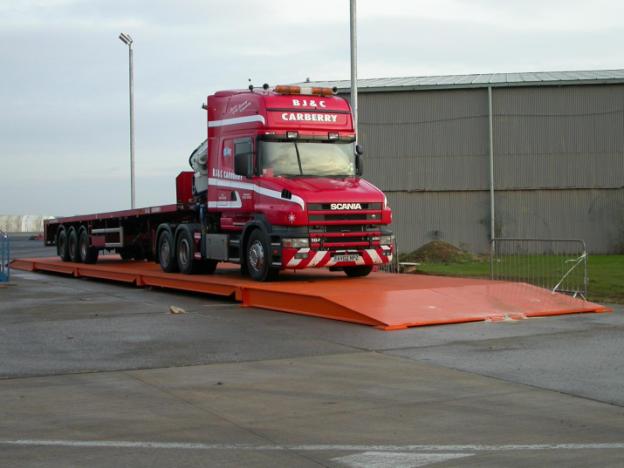
Scaling machines are a part of most businesses. Every business that manufactures or sells products needs to measure them at several stages. Product manufacturers, distributors, and sellers use various types of scaling equipment such as weighing machines to measure the weight of individual items and packages.
However, using scaling and weighing machines is not enough for business. You need to use them in the right ways to maintain and improve efficiency and productivity. This post shares some scaling equipment tactics that companies can apply for accurate measurements.
Choosing the right weighing machines

Geograph
You need to consider your requirements while choosing the weighing machines for your business. There are a variety of weighing machines available for measuring different types of items. You need to consider the type of product, size, and quantity of things you want to measure. For example, there are different machines for measuring the weight of foods, vehicles, tools, and industrial products.
Location of installation
There are different machines for various purposes, and business needs to consider the location of installation while buying scaling equipment. They require a different size of areas for installation. For example, the scales for weighing vehicles require an ample space while the machines for weighing foods or tools can be installed in a smaller area.
Ability to customize
Most machines come with preinstalled settings, and you need to use them as they are made to use. However, some manufacturers make customizable equipment that you can customize as per your requirements. For example, the conveyor belt scales come with features to improve the functionality, flexibility, and enhance the protection of the machine.
It is best to buy the scaling equipment that comes with the connectivity and integration options. You can connect them with a warehouse management system, and your computers. Some machines come with calibration software, and for others, you need to install it manually.
Accurate installation
The first step in using scaling equipment is to install it accurately. It is best to place the machine in a permanent location where it is safe from external elements like dust and humidity. Also, the device should have the option to connect it to peripheral equipment. In case of installation of multiple load cells, it is essential to conduct a corner load test to check the uniform weight distribution. Workers should not move the equipment once it is installed and calibrated accurately.
Calibrate the equipment

It is essential to calibrate the scaling machines regularly as using them frequently can deviate the accuracy of results to a certain extent. You must use only the certified test weights to record the results. In case the results are not in accordance with the test weight, you need to make manual adjustments to fix the drift. The accurate calibration should be done regularly to ensure the correct measurement results for your products.
Load cell accuracy
The load cell is a piece of metal that converts the pressure of the load into an electrical signal to measure the weight. It is essential to select a high-quality load cell to obtain the weighing accuracy of the equipment. As long as the load of the weight is accurately applied to the load cell, it produces an accurate and proportional electric signal that provides actual results.
Nonlinearity: ± 0.018 % of the rated output of the load cell.
Hysteresis: ± 0.025 % of the rated output of the load cell.
Non-repeatability: ± 0.01 % of the rated output of the load cell.
Creep: ± 0.01 % of the rated output of the load cell in 5 minutes.
Temperature effect on output: ± 0.0008 % of the load/ deg Fahrenheit.
Temperature effect on zero: ± 0.001 % of the rated output of load cell/deg Fahrenheit.
Load factors
You need to ensure that the weight you want to measure applies load to every load cell in the weighing machine as recommended by the manufacturer. Any load if applied incorrectly, such as a twisting load can cause the strain gauges in cells to send a change in signal proportional to the twisting instead of the actual weight of the load. For accurate weighing, all the weight of the load should be supported by the load cells alone.
Take care of the environment

Many environmental forces can affect the accuracy or measurements of your loads. The environmental forces such as shock loading, wind loading, temperature changes, vibration, and pressure can lead to errors in the weighing results. Therefore, it is essential to maintain an isolated environment that is free from wind flow, shocks, vibrations, changes in temperature, and pressure to obtain accurate weighing results.
Interference with other signals
It is essential for the load cells to measure only the required weight and not any other thing. The signals, such as radio frequency signal, electro-mechanical signals, can interfere with the load cell electric signal. Moreover, temperature and moisture can also affect the accuracy of the results. Vibration is a mechanical noise while radio frequency and electro-mechanical interference are the electrical noises that can interfere with the load cell signal. Therefore, it is essential to install the scaling equipment in an area free from such interference of signals.
Use of livestock scales
Livestock scales are used for weighing of animals on farms. Animals such as cattle and horses do not allow the weighing by conventional weighing equipment. That is why farm owners use livestock scales for weighing the animals as they are not affected by natural conditions like dirt, filth, and humidity. The livestock scales come with fencing in which the users can load the animal. The fencing is given to prevent the animal from escaping that prevents the inaccuracy of results.
Final words
These are some scaling equipment tactics businesses can use for measurements. Taking care of the installation, calibration, and environmental factors can improve the accuracy of results. Following the tips in this article can help businesses and inventory management systems to improve the efficiency of scaling equipment. The accurate measurements also save time and effort that in turn, boost the productivity of a business.




